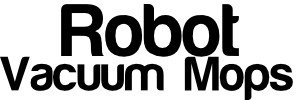The Evolution of Robot Hoovers: Revolutionizing Home Cleaning
Robot hoovers, also understood as robotic vacuum cleaners, have transformed how people approach family cleaning jobs. At first presented in the late 1990s, these autonomous makers have actually evolved rapidly due to improvements in innovation, expert system, and artificial intelligence. Today, they are equipped with a variety of functions that make them highly effective in preserving cleanliness in living spaces. This article explores the history, working, advantages, and future of robot hoovers.
The History of Robot Hoovers
The idea of robotic vacuums dates back to the 1970s, however it wasn't till the launch of the Roomba by iRobot in 2002 that they got traditional attention. The Roomba was developed to immediately navigate numerous surface areas, preventing barriers while efficiently cleaning floors. Ever since, several substantial advancements have occurred, including:
| Year | Development |
|---|---|
| 1996 | First model robotic vacuum cleaner established by a Japanese company. |
| 2002 | iRobot introduces the Roomba, mass promoting robotic vacuums. |
| 2004 | Introduction of the very first Roomba with a dirt detection sensor. |
| 2011 | Introduce of designs with cordless capabilities and smart device integration. |
| 2020 | Advanced models featuring AI, improved navigation systems, and mopping capabilities. |
How Robot Hoovers Work
Robot hoovers operate on a combination of sensors, video cameras, and algorithms that allow them to tidy efficiently. Secret elements of these devices include:
Sensors:
- Obstacle Avoidance Sensors: Detect walls, furnishings, and even stairs, avoiding accidents and falls.
- Dirt Detection Sensors: Identify areas that need more extensive cleaning.
Navigation:
- Gyroscopes: Help determine the robot's orientation and motion.
- Cams and Lidar: Enable mapping of the home environment to create optimum cleaning paths.
Cleaning Mechanisms:
- Vacuum Motors: Generate suction to get dirt and particles.
- Brush Rollers: Agitate dirt out of carpets for much deeper cleaning.
Power Supply:
- Batteries: Rechargeable lithium-ion batteries offer the essential power for prolonged cleaning cycles.
User Interface:
- Mobile Apps and Smart Home Integration: Users can set up cleanings, monitor performance, and manage the robot from another location.
Benefits of Robot Hoovers
Robot hoovers provide numerous benefits, making them an attractive alternative for modern homes:
- Time-Saving: Automated cleaning permits users to concentrate on other tasks while the robot efficiently cleans floors.
- Convenience: Many models can be scheduled for cleaning sessions, making sure that homes remain neat without manual effort.
- Accessibility: Ideal for people with movement obstacles or busy way of lives, allowing simpler home upkeep.
- Constant Cleaning: Regular, automated cleanings reduce the accumulation of dirt and irritants, contributing to a much healthier living environment.
- Smart Technology: Integration with smart home systems permits increased control and modification.
Limitations of Robot Hoovers
Despite their advantages, robot hoovers include particular restrictions:
- Navigation Challenges: They may have a hard time in messy spaces or with certain floor types such as high-pile carpets.
- Battery Life: Most models require routine charging, which can restrict cleaning period.
- Maintenance: Regular cleaning of filters, brushes, and emptying dust bins is necessary for optimum performance.
- Price: Advanced designs can be costly compared to conventional vacuum cleaners.
The Future of Robot Hoovers
As technology continues to progress, the future of robot hoovers looks promising. Prepared for improvements include:
- Improved AI: Enhanced algorithms will enable better item acknowledgment and dynamic mapping of spaces.
- Hybrid Models: Integration of vacuuming and mopping capabilities in one gadget will supply a thorough cleaning solution.
- Increased Autonomy: Future designs might navigate even the most intricate environments without human intervention.
- Sustainability: Battery technology developments will cause longer-lasting, more energy-efficient robots.
Frequently Asked Questions (FAQs)
1. Are robot hoovers reliable for animal hair elimination?
Yes, lots of robot hoovers are specifically created to tackle animal hair with powerful suction and specialized brushes that lower tangling.
2. How do best robot cleaner navigate around furniture?
Robot hoovers use a mix of sensing units and video cameras to find challenges, permitting them to navigate around furniture and prevent collisions.
3. Can robot hoovers tidy carpets?
A lot of contemporary robot hoovers work on both hard floorings and carpets. It is advisable to inspect the specifications of specific models for particular performance.
4. Do robot hoovers require programs?
Many robot hoovers include user-friendly apps that allow owners to set schedules and tailor cleaning preferences, making programs straightforward.
5. Just how much do robot hoovers cost?
Costs for robot hoovers differ widely, ranging from ₤ 200 to around ₤ 1,500, depending on features and brand name.
Robot hoovers have actually come a long way given that their inception, offering an effective and hassle-free cleaning option for modern-day households. Their increasing ability and intelligence make them a useful option for individuals seeking to streamline their cleaning routines. As technology continues to advance, robot hoovers will likely end up being even more capable, offering additional features that cater to the evolving needs of users. Their journey from novelty to requirement highlights an essential shift in how society approaches home upkeep, marking a considerable milestone in the intersection of technology and life.

